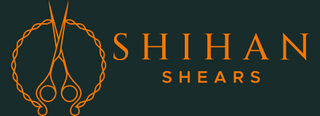- Key Tools: Use high-quality Japanese steel shears (5.5"–6.5" blades) for precision and durability.
- Layer Types: Choose styles like long, face-framing, invisible, choppy, or feathered layers based on hair type and texture.
- Techniques: Point cutting for texture, beveling for soft edges, and dry cutting for curly or fine hair provide tailored results.
- Maintenance: Keep tools sharp, clean, and tension-adjusted. Regular trims every 6–8 weeks maintain the shape.
Quick Overview of Layer Types
| Layer Type | Best For | Key Benefits | Maintenance Level |
|---|---|---|---|
| Long Layers | Most hair types | Adds natural flow | Low |
| Face-Framing Layers | All lengths | Highlights facial features | Medium |
| Invisible Layers | Fine hair | Subtle volume | Low |
| Shattered Layers | Thick hair | Bold texture, reduces bulk | High |
| Feathered Layers | Longer hair | Smoothly blended layers | Medium |
| Choppy Layers | Thicker hair | Edgy texture, added volume | High |
Start with the right tools, techniques, and a clear understanding of hair type to create layered styles that look amazing and last.
Layered Haircuts: Basics and Results
Types of Layered Cuts
Layered haircuts are designed to suit various hair types, offering different styles and movement. Here’s a quick breakdown:
| Layer Type | Best For | Key Benefits | Maintenance Level |
|---|---|---|---|
| Long Layers | Most hair types | Keeps length, adds natural flow | Low |
| Face-Framing Layers | All lengths | Highlights facial features | Medium |
| Invisible Layers | Fine hair | Adds subtle volume | Low |
| Shattered Layers | Thick hair | Reduces bulk, adds bold texture | High |
| Feathered Layers | Longer hair | Blends layers smoothly | Medium |
| Choppy Layers | Thicker hair | Creates edgy texture and volume | High |
"Layers are customizable depending on how loud or soft my client wants their haircut to be" .
Each type of layering offers unique styling possibilities, depending on the client’s preferences and hair type.
How Layers Change Hair Appearance
Layering can completely change how hair looks and feels. It’s not just about cutting - it’s about creating a style that works with the hair’s natural properties. Layers can:
- Boost Volume: Perfect for fine or flat hair, especially when added at the crown .
- Add Movement: Long layers help hair flow naturally, softening sharp features .
- Balance Face Shape: Face-framing layers can complement and soften strong jawlines .
- Enhance Texture: Choppy or textured layers add dimension and reduce bulk in thick hair.
Stylists often use specialized techniques to achieve these effects. For example, point cutting or razoring creates soft, subtle layers in fine hair, while thinning shears help manage thicker hair types .
Hair Type Analysis
To get the best results, it’s essential to match the layering technique to the client’s hair type and texture. Here’s how stylists approach this:
- Texture Assessment: Coarse hair benefits from face-framing layers around the chin to reduce bulk, while fine hair requires longer, heavier layers for balance .
- Density Evaluation: For thick hair, internal layers can remove weight, while fine hair needs carefully placed layers to maintain fullness .
- Porosity Check: Understanding hair porosity helps predict how layers will settle and guides product recommendations .
Choosing the right layering method ensures the haircut complements the client’s natural hair characteristics and styling goals, creating a look they’ll love.
Tools for Professional Layering
Professional Hair Shears Guide
The right shears make all the difference when it comes to creating flawless layers. High-quality Japanese steel shears are a go-to choice for their cutting precision and long-lasting durability. Here are some important features to look for:
| Feature | Recommended Specifications | Impact on Layering |
|---|---|---|
| Blade Length | 5.5" – 6.5" | Shorter blades for detailed work; longer ones for slide cutting |
| Edge Type | Convex | Delivers smoother cuts with less effort |
| Material | Japanese Steel (VG-10, ATS-314) | Offers better sharpness and durability |
| Handle Design | Crane or Offset | Minimizes wrist strain during detailed cuts |
| Tension System | Adjustable | Allows flexibility for different hair textures |
"These are like a pair of Louis Vuittons, they may take a week to get used to, but after that you're performing at a higher level." – Sam Villa, Hairstylist
Required Cutting Tools
To achieve precise layering, a well-rounded toolkit is just as important as premium shears. Professional stylists should have the following:
Primary Cutting Tools:
- Cutting shears with a 5.5" to 6.5" blade
- Texturizing shears with different tooth counts:
- 5–27 teeth for thick or coarse hair
- 11–15 teeth for medium-thick hair
- 32–35 teeth for fine hair
- Blending shears for seamless transitions
Supporting Equipment:
- Sectioning clips
- Fine-toothed cutting combs
- Wide-toothed detangling combs
- Spray bottle for dampening hair
- Protective blade covers
Tool Care and Sharpening
Taking care of your tools is essential to maintaining their performance and extending their lifespan - quality shears can last up to 15 years with proper care . Here's how to keep them in top shape:
Daily Care:
- Clean blades after every use with warm soapy water.
- Avoid harsh chemicals like Barbicide, as they can damage the steel .
- Dry thoroughly to prevent rust.
- Store in protective cases lined with soft material.
Weekly Maintenance:
- Apply a professional-grade lubricant around the pivot screw.
- Check and adjust tension settings to ensure smooth operation.
Professional Sharpening:
- Have your shears sharpened by a professional if they start pulling hair instead of cutting cleanly .
Proper maintenance not only keeps your tools in excellent condition but also ensures the precision needed for advanced layering techniques. For dependable performance, consider investing in tools like the Shihan Shears' Legacy Hair Shears Set, made with ATS-314 steel and backed by a lifetime warranty. These tools are built to deliver the accuracy required for creating perfectly layered cuts.
Layer Cutting Methods
Hair Sectioning Steps
Start by dividing the hair into sections for easier management. Begin with a center part running from the front hairline to the nape. Then, create additional partings from the apex to each ear, forming four main sections:
- Crown: From the apex to the front hairline
- Left side: From the center part to the left ear
- Right side: From the center part to the right ear
- Back section: From the apex to the nape
Keep subsections between ¼ and ½ inch thick to ensure even layering. Hold your comb horizontally, parallel to the floor, to maintain accurate cutting angles .
Once the sections are ready, select a cutting method that aligns with the client's hair type and desired style.
Comparing Cutting Techniques
Each cutting technique achieves different effects, depending on the hair's texture and the desired outcome:
- Point Cutting: Great for thick hair, it adds texture and movement with precision.
- Blunt Cutting: Works well for fine hair, giving structure and weight. However, it requires careful attention to angles.
- Beveling: A versatile option for all hair types, it softens edges and blends layers seamlessly.
- Thinning: Best for coarse or thick hair, it removes excess bulk while keeping the length. Avoid using this on fine hair.
Slide and Dry Cutting
Advanced methods like slide and dry cutting can enhance layered styles even further. Slide cutting is excellent for reducing weight and creating smooth transitions, especially in thick, straight hair. Dry cutting, on the other hand, offers precise control over curly or fine hair by showing its natural fall and any uneven areas. Some stylists choose to straighten the hair first to better evaluate texture variations .
sbb-itb-a50b05d
Solving Common Layer Problems
Correcting Uneven Layers
Start by assessing the hair in its dry, natural state to pinpoint any uneven areas. Work in sections, focusing on one area at a time. To fix uneven layers, make small adjustments first and gradually add texture as needed. Point cutting is a great technique here - it allows you to remove hair in tiny, controlled amounts without creating sharp, unnatural lines. This approach lays the groundwork for smoother blending with other methods.
Creating Smooth Layer Transitions
For soft, flowing transitions between layers, try beveling - cutting the hair tips at a diagonal angle. This technique softens edges and ensures a more fluid look. Precision tools, like Japanese steel shears, can make a big difference. For example, the Shihan Zen Hair Cutting Shears (made with VG-10 steel) are known for their sharpness and accuracy, which help achieve smooth, clean cuts.
Other helpful techniques for transitions include:
- Blending shears: Perfect for softening harsh lines, especially in shorter cuts.
- Slide cutting: Ideal for removing weight from the midsection of the hair.
- Point cutting: Use at various angles to create a more natural flow between layers.
These methods help you adapt the cut to suit different hair textures and styles.
Techniques for Different Hair Types
Layering techniques should always consider the hair's texture and type:
- Curly hair: Dry cutting works best to highlight the natural curl pattern and avoid adding unnecessary bulk.
- Fine hair: Use concave layering to enhance volume and maintain bounce.
- Thick or coarse hair: Combine point cutting with thinning shears to reduce weight while preserving the overall shape.
To keep the layers looking polished, schedule regular trims every two to four months. This helps maintain the precision and smooth transitions of the cut.
Related video from YouTube
Conclusion
To excel in layered haircuts, focus on refining your technique and using the right tools. High-quality Japanese steel shears, such as the Shihan Zen with VG-10 steel, provide exceptional sharpness, ensuring smooth transitions. Keep your shears in top condition by cleaning them daily, storing them properly, and scheduling professional sharpening annually .
For different hair types, choose your blade length wisely: longer blades (6 inches or more) work best for thick hair, while shorter blades are ideal for detailed work on fine hair . Ergonomic designs can also help minimize hand fatigue during long sessions. By investing in durable, high-performance shears, you can achieve precise cuts and ensure your tools last throughout your career . Pair these tools with advanced techniques to perfect your layered haircut skills.

